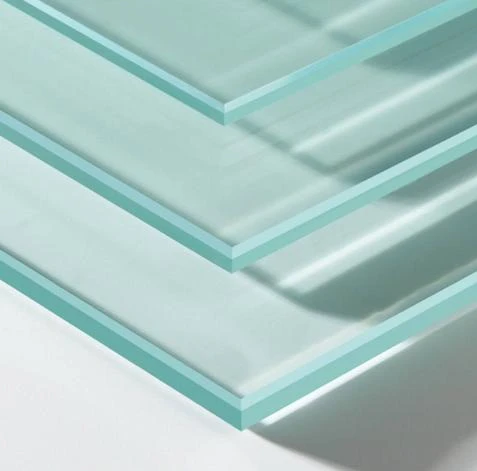Understanding the Pricing of 5mm Float Glass
Float glass is a common type of glass that is widely used in various applications, including windows, mirrors, and facades. Its manufacturing process involves floating molten glass on a bed of molten tin, creating sheets that are flat and smooth. Among the various thicknesses available, 5mm float glass is particularly popular due to its balance between weight, strength, and versatility. In this article, we will explore the factors influencing the price of 5mm float glass and provide insights into its market trends.
Factors Influencing the Price of 5mm Float Glass
1. Raw Material Costs The prices of raw materials such as silica sand, soda ash, and limestone significantly influence the cost of float glass production. Any fluctuation in the supply and demand of these materials can lead to changes in glass prices. For instance, an increase in the quarrying cost of silica sand or disruptions in soda ash supply could drive up the end product's price.
2. Manufacturing Process The production of float glass is energy-intensive, requiring high temperatures to melt the raw materials. As energy prices fluctuate due to global market trends or local regulations, the costs incurred during the manufacturing process can significantly affect the price of 5mm float glass. Modern manufacturers that have adopted energy-efficient technologies might mitigate some of these costs, benefiting from lower operational expenses over time.
3. Market Demand The demand for 5mm float glass can vary based on market conditions, construction trends, and consumer behavior. In periods of economic growth, when construction and renovation activities rise, the demand for glass often increases, leading to higher prices. Conversely, during economic downturns, the decreased demand for construction materials can lower float glass prices.
4. Geopolitical Factors Trade policies, tariffs, and geopolitical tensions play a crucial role in the pricing dynamics of building materials, including float glass. For example, tariffs imposed on imported raw materials or finished glass products can lead to increased prices domestically, impacting manufacturers and consumers alike.
5mm float glass price
5. Transportation Costs The price of transportation can also significantly affect the final price of 5mm float glass. Since float glass is often shipped over considerable distances, fluctuations in fuel prices or changes in logistics costs can be factors that manufacturers consider when setting their prices. Efficient supply chain management can help mitigate some of these costs, allowing companies to offer competitive pricing.
6. Technological Advancements Innovations in glass production technologies can alter cost structures. Advanced production methods can increase efficiency, reduce waste, and lead to lower prices over time. Additionally, developments in glass coatings and treatments might enhance the performance of 5mm float glass while introducing new pricing strategies for enhanced products.
7. Regional Variations Glass prices can differ substantially based on geographical location. Factors such as local regulations, taxes, and competitive landscape can influence pricing in different regions. For example, regions with robust construction industries might see higher float glass prices due to increased competition among manufacturers.
Current Market Trends
As of the latest reports in 2023, the market for float glass, including 5mm varieties, is expected to witness steady growth. The ongoing trends in green building and energy-efficient design have led to increased interest in high-quality, insulated float glass products. Furthermore, innovations in smart glass technology may also open up new market opportunities, potentially influencing pricing dynamics in the future.
In conclusion, the price of 5mm float glass is influenced by a multitude of factors, including raw material costs, manufacturing processes, market demand, geopolitical considerations, transportation costs, and technological advancements. Understanding these factors provides valuable insights into the float glass market and can help buyers make informed decisions when purchasing glass for various applications. As the construction sector continues to evolve, staying attuned to market trends will be essential for stakeholders in the float glass industry.
 Afrikaans
Afrikaans  Albanian
Albanian  Amharic
Amharic  Arabic
Arabic  Armenian
Armenian  Azerbaijani
Azerbaijani  Basque
Basque  Belarusian
Belarusian  Bengali
Bengali  Bosnian
Bosnian  Bulgarian
Bulgarian  Catalan
Catalan  Cebuano
Cebuano  Corsican
Corsican  Croatian
Croatian  Czech
Czech  Danish
Danish  Dutch
Dutch  English
English  Esperanto
Esperanto  Estonian
Estonian  Finnish
Finnish  French
French  Frisian
Frisian  Galician
Galician  Georgian
Georgian  German
German  Greek
Greek  Gujarati
Gujarati  Haitian Creole
Haitian Creole  hausa
hausa  hawaiian
hawaiian  Hebrew
Hebrew  Hindi
Hindi  Miao
Miao  Hungarian
Hungarian  Icelandic
Icelandic  igbo
igbo  Indonesian
Indonesian  irish
irish  Italian
Italian  Japanese
Japanese  Javanese
Javanese  Kannada
Kannada  kazakh
kazakh  Khmer
Khmer  Rwandese
Rwandese  Korean
Korean  Kurdish
Kurdish  Kyrgyz
Kyrgyz  Lao
Lao  Latin
Latin  Latvian
Latvian  Lithuanian
Lithuanian  Luxembourgish
Luxembourgish  Macedonian
Macedonian  Malgashi
Malgashi  Malay
Malay  Malayalam
Malayalam  Maltese
Maltese  Maori
Maori  Marathi
Marathi  Mongolian
Mongolian  Myanmar
Myanmar  Nepali
Nepali  Norwegian
Norwegian  Norwegian
Norwegian  Occitan
Occitan  Pashto
Pashto  Persian
Persian  Polish
Polish  Portuguese
Portuguese  Punjabi
Punjabi  Romanian
Romanian  Russian
Russian  Samoan
Samoan  Scottish Gaelic
Scottish Gaelic  Serbian
Serbian  Sesotho
Sesotho  Shona
Shona  Sindhi
Sindhi  Sinhala
Sinhala  Slovak
Slovak  Slovenian
Slovenian  Somali
Somali  Spanish
Spanish  Sundanese
Sundanese  Swahili
Swahili  Swedish
Swedish  Tagalog
Tagalog  Tajik
Tajik  Tamil
Tamil  Tatar
Tatar  Telugu
Telugu  Thai
Thai  Turkish
Turkish  Turkmen
Turkmen  Ukrainian
Ukrainian  Urdu
Urdu  Uighur
Uighur  Uzbek
Uzbek  Vietnamese
Vietnamese  Welsh
Welsh  Bantu
Bantu  Yiddish
Yiddish  Yoruba
Yoruba  Zulu
Zulu 

